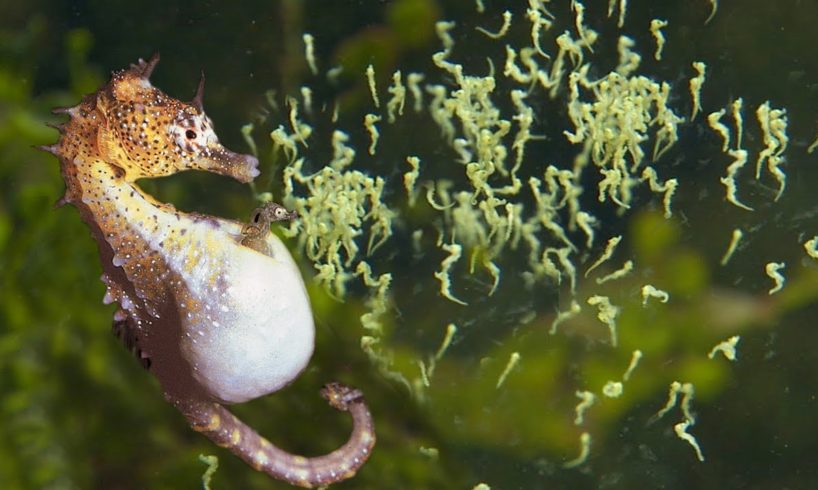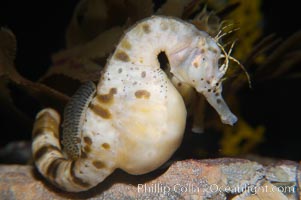The male seahorse carries the eggs until they hatch instead of the female

The Male Seahorse: A Unique Surrogate Parent

Have you ever heard of a male animal being responsible for carrying and birthing their offspring? While it may sound quite unusual, this is indeed the case with seahorses. Unlike most species where the female carries the eggs, in seahorses, the males take on the role of pregnancy. It’s a fascinating phenomenon that showcases the incredible diversity and adaptability found in nature.
Seahorses are a type of fish belonging to the Syngnathidae family, which also includes pipefish and seadragons. These unique creatures are known for their elongated bodies, horse-like heads, and prehensile tails. They can be found in various habitats, ranging from coral reefs to estuaries, and even seagrass meadows.

One of the most astonishing aspects of seahorse behavior is their reproductive strategy. Unlike the majority of creatures where females invest significant energy in carrying and nurturing the unborn offspring, male seahorses step up and take on the task. After courtship and successful mating, it is the male seahorse who becomes pregnant.
The process starts when the female seahorse deposits her eggs into a special brood pouch located on the male’s abdomen. This pouch acts as an incubator, providing a safe and nurturing environment for the developing eggs. The male’s body undergoes physiological changes to support the growing embryos, and the pregnancy can last anywhere from a few weeks to several months, depending on the species.
Male seahorses are equipped with a complex reproductive system that allows them to regulate the environment within the brood pouch. This ensures optimal conditions for the embryos’ development, including temperature regulation and the exchange of nutrients and oxygen. It’s fascinating to think about the intricate mechanisms at play within the male seahorse’s body to support the growth of the next generation.
When the time comes for the eggs to hatch, the male seahorse undergoes muscular contractions, expelling the fully formed, miniature seahorses into the water. These young seahorses, known as fry, are completely independent from birth and must fend for themselves right away. It’s a remarkable transition from the protective environment of the brood pouch to the vastness of the open ocean.
The reason behind this unique reproductive strategy in seahorses is still a subject of scientific research. However, it is believed that the male’s ability to carry the eggs and give birth offers certain advantages. For instance, it allows the female to produce more eggs as she doesn’t have to invest energy in pregnancy. Additionally, the male’s role in pregnancy ensures better survival chances for the young seahorses as they are born in a well-prepared environment.
In conclusion, the male seahorse’s ability to become pregnant and carry the eggs until they hatch is a fascinating example of nature’s diversity. It challenges traditional gender roles and highlights the adaptability of different species to the ever-changing environment. Studying these extraordinary creatures allows us to gain a deeper understanding of the intricate connections and mechanisms that shape life on our planet.
To read more about seahorses and their unique reproductive biology, you can visit the National Geographic website.
Tags
Share
Related Posts
Quick Links
Legal Stuff

